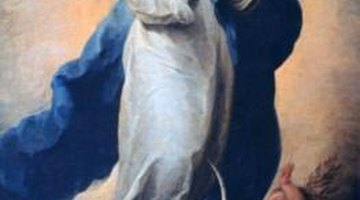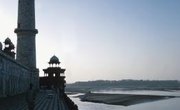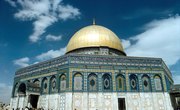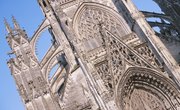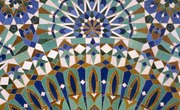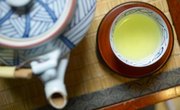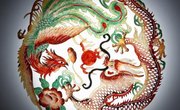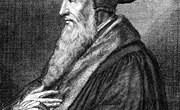In the 16th century, the Roman Catholic Church faced a challenge to its authority in the form of the Protestant Reformation, a movement that rejected the supreme authority of the Church in favor of personal faith and the Bible. Historically, the start of the Reformation is marked by Martin Luther nailing his "95 Theses" to a church door in Wittenberg in 1517. During the next century and a half, both the Catholic Church and Protestants produced art that reflected the change in religion and society the Reformation had wrought, the stylistic characteristics of which are known as Baroque.
Italy
Italy was the heart of counter-Reformation art. From the tenebristic paintings of Michelangelo Caravaggio, where subjects such as "The Taking of Christ" were dramatically highlighted against a dark background, to the theatrical sculptures of Gianlorenzo Bernini and illusionistic ceiling paintings that sought to pull back the ceiling and sky to reveal heaven, religious art strove to inspire and dazzle its audience with the glory of the Roman Catholic Church. Another goal was to teach viewers about the Bible and Catholic doctrine.
Northern Europe
Northern Europe, on the other hand, was the heart of the Reformation, and in many places Protestants reacted against the use of religious art, believing it to be idolatry. Although Martin Luther himself wasn't an iconoclast, or breaker of images, there was common distaste for the rich artwork that decorated formerly Catholic churches all over Northern Europe. As a result, many cathedrals and churches were stripped bare, their paintings and statues destroyed to create a very simple space for worship.
Netherlands
In 1568, what is now Holland rebelled against Spain and became the Protestant Dutch Republic. From this new republic came some of the most original and influential art in European history. The Dutch were obsessed with scenes of contemporary life -- and not the lives of royals, but of the mercantile middle class, who were willing and able to spend large amounts of money on group portraits such as those of Frans Hals, or genre scenes such as those by Jan Vermeer. Although some religious paintings were produced, for the most part Baroque Dutch art reflected the fact that it was primarily funded by Calvinist middle-class merchants, not by the church or state.
Spain
Although the Habsburg Empire, which ruled Spain, was steadily declining in the Baroque period, it still produced a wealth of art that reflected religious and cultural ties to Italy and the Vatican. The influence of Caravaggio on painters including Francisco de Zurbarán and Jusepe de Ribera created both religious and secular works of art with theatrical lighting and diagonal lines. Meanwhile, religious painters such as Bartolomé Esteban Murillo had to follow specific iconographic rules in their work. For example, the Virgin Mary had to be dressed in blue and white, with hands folded in prayer.
Related Articles
References
- National Gallery of Art: Caravaggio's "The Taking of Christ"
- Art History; Marilyn Stokstad
- Smarthistory: The Counter-Reformation
Resources
Writer Bio
Natasha Brandstatter is an art historian and writer. She has a MA in art history and you can find her academic articles published in "Western Passages," "History Colorado" and "Dutch Utopia." She is also a contributor to Book Riot and Food Riot, a media critic with the Pueblo PULP and a regular contributor to Femnista.

